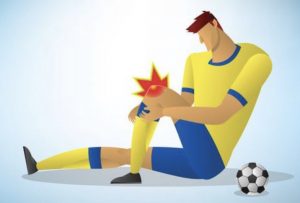
Is Dry Needling the same as Acupuncture?
Where to begin our re-entry to the gym (or your sport)?
A large portion of us let fear of pain or re-injury delay that last big jump back into the gym or onto the field/court. Sometimes we need some guidance or someone to help us along the path.
Post-injury, pre-gym/sport advice:
- See a medical professional if needed. Your doctor or physical therapist specializes in treating injuries and can guide the process so that there is minimal risk of long-term effects. Look for someone who specializes in sports medicine, as not all MD’s and PTs are equal.
- Find ways to move even when recovering from the injury. If you’ve rolled your ankle, work your core and shoulders. If you hurt your shoulder, there’s nothing wrong with working your core or legs!
- Press Reset! Your body is probably going through its typical Fight-or-Flight response after the injury. Pain and spasms are the body’s way of protectively guarding the injured area – these are initially good… They tell you that you have hurt something and that further use may hurt it more. But after just a little while (hours to a couple of days), this response starts to impede the healing process and may even start affecting other areas of the body. You have probably started breathing with your chest, clenching your jaw, shrugging your shoulders or even making a fist in response to the pain. This in turn continues to tell your brain that you are in Fight-or-Flight mode, thus continuing the cycle and making an acute injury have chronic side-effects.
Pressing Reset is simply performing a movement that improves or adds to the information going to you brain. When the nervous system receives information that it is looking for, it feels safe, allowing the body to move better and feel better, thus turning off the Fight-or-Flight response. Try these easy activities every day:
- Breathe. Lie on your back comfortably and breathe slowly in and out through your nose, allowing your belly to rise and fall with each breath. Fill your belly first, before you fill your chest. Continue this relaxed breathing for 5 minutes. This can decrease pain and spasms, and stimulates the Vagus nerve (the nerve that shuts off the Fight-or-Flight response).
- Move your head and eyes – leading with your eyes, slowly rotate your head from side to side. Keep up the belly breathing as above and try your best to keep your shoulders relaxed. This sends tons of feedback to your brain, telling it to relax and helps turn off that Fight-or-Flight response. 3-5 minutes should be sufficient!
Returning to the gym or to your sport:
Let’s say the injury and rehab are done and it’s time to get back onto the field or into the gym, but you’re doing the human thing… you let your injury get into your head!
“I’m afraid of hurting it again!”
We often focus on the negatives and the fear of re-injury, so we can sometimes freeze when it comes to resuming activities. If that’s the case, let the professionals make those decisions for you – seek out a trainer who understands injury recovery and who specializes in adapting and modifying exercise to meet your needs. Then go slow and listen to your body.
The Return-to-Sport/Gym Advice:
The Return-to-Sport or Return-to-the-Gym plan looks much very much like the post injury advice.
- See a professional if needed. Your trainer specializes in exercise dosing and modifications when it is needed to help the injury continue to recover. This also helps to keep the rest of you in peak condition.
- Find what movements you can do without re-irritating the injury. Some soreness is normal when resuming fitness activities or sport, but if you keep the soreness low, you will gain confidence in your body and keep that Fight-or-Flight response at bay. Remember, you are NOT fragile… you just had an injury. Lighten the loads you lift. Slow down your movements. Shorten the ranges you move in. As you gain strength, flexibility and confidence, you can increase those loads, speeds and ranges.
That leads us to… you guessed it!
- Press Reset! Remember that Pressing Reset is simply performing a movement that improves or adds to the information going to you brain so that the body is able to move better and feel better. Pressing Reset at this stage, though, has a more performance-based approached. Here, Pressing Reset can not only strengthen the injured area, but it can be used to improve both cardiovascular function and strength/power output.
If you are unfamiliar with using Pressing Reset in this manner, this is where the programs at OSi-online.com shine! Programs like Unlock Your Body, Design Your Body, and Build Your Body (coming soon!) are intended to take the brakes of performance off your body. They can be used to restore function, improve performance, and even to gain size. They can be used to utilize the body’s natural strength and hard-wired movement patterns to help get you back to pre-injury levels and better!
We are made to be active and enjoy our lives. As a result of “living life”, injuries are always a risk. And if we do get injured, recovery is not usually enjoyable. But the benefits of movement and engaging in life far outweigh the risks. So if an injury occurs, don’t let it get you down. Use these tips to help speed the healing process and get you back to moving!
Original Strength Institute has a physical therapist on-site, and we offer a virtual Original Strength Screen and Assessment and consult for those looking to work with a member of our team from a distance. Please click here if you’d like to discuss options with someone.
Local to our home-base in Fuquay-Varina, NC? Visit us Monday, February 8th between 4-5pm for our monthly FREE Injury Clinic with physical therapist, Kurt Brooks.

